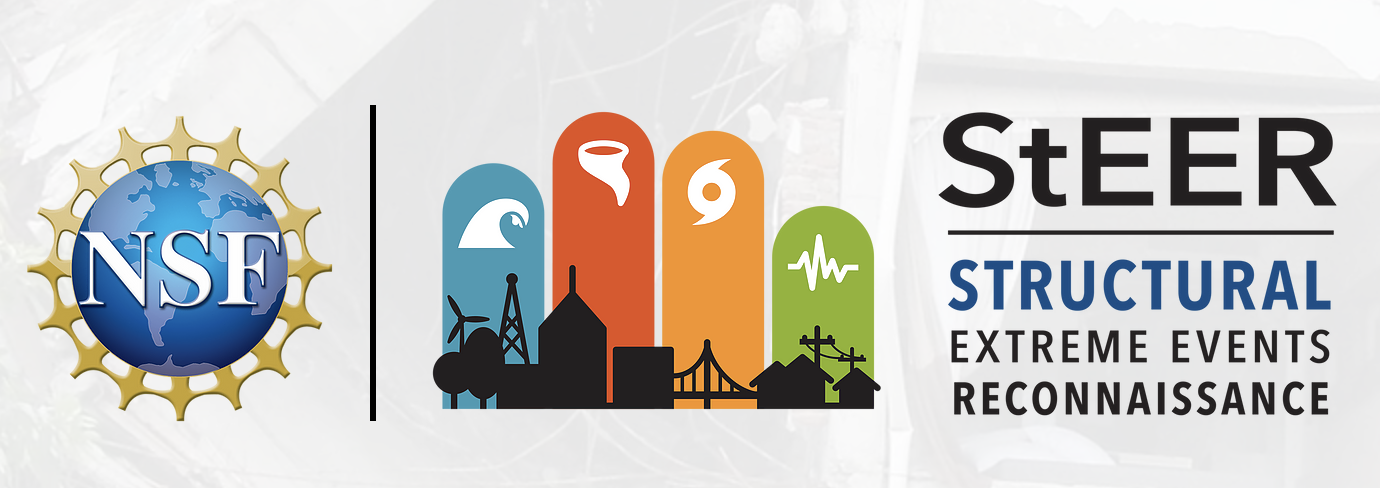StEER Renewed and Expanded through New NSF Award
Released on May 14, 2021

The National Science Foundation has announced a three year renewal of the Structural Extreme Events Reconnaissance (StEER) Network (CMMI 2103550), building off the initial EAGER award (CMMI 1841667). StEER is the natural hazards engineering community's structural engineering group that investigates the impact of natural hazards (hurricanes, tornadoes, earthquakes and tsunamis) on the built infrastructure. Since its inauguration StEER has responded to over three dozen natural hazard events, including 17 international events, involving over 150 different members, issuing over three dozen briefings/reports, and collecting over 5000 structural assessments. The new award will streamline the network's core operations, while also developing new protocols for more efficient data collection and processing as well as formalizing dissemination to constituencies in research, policy, and practice. Specific capabilities to be developed in StEER v2.0 include:
- a tiered, regional data collection model for more agile field responses,
- a workflow that unifies structural assessments across hazards and building typologies,
- new capacities for automated data collection and synthesis,
- a damage quantification scheme offering more objective evaluations of performance compatible with established rating systems,
- a constituent-focused reconnaissance engagement and communications hub for greater outreach to non-academic audiences; and
- observation-driven science planning that links the network's findings to research and technology transfer opportunities for its members.
StEER Director Tracy Kijewski-Correa will lead the development of capabilities 2 and 6. Associate Director for Data Standards, David Roueche, will oversee capability 4. Meanwhile Associate Directors for Coastal, Seismic and Wind Hazards, Ian Robertson, Khalid Mosalam and David O. Prevatt, will respectively lead the operationalization of capabilities 1, 3 and 5.
In total these developments will result in a more coherent natural hazards engineering research agenda, with more opportunities for participation, broader reach, and greater impact through the more intentional translation of StEER's learnings into policy and practice. Ultimately, by more effectively seizing the opportunity to not only learn but act upon the knowledge gained in the study of hazard events, this renewal will contribute to generating the knowledge necessary t make communities more resilient and sustainable.
Opportunities to participate in these new initiatives will be announced when the project commences in the third quarter of this year. In the meantime, queries can be directed to admin@steer.network or at the #steer channel on Slack.
The StEER mission is to deepen the structural natural hazards engineering (NHE) community's capacity for reliable post-even reconnaissance through capacity building, and training in field reconnaissance, coordination to effect early, efficient and impactful event responses and collaboration by engaging communities of research, practice and policy to learn from disasters.
>Visit www.steer.network to learn more.





